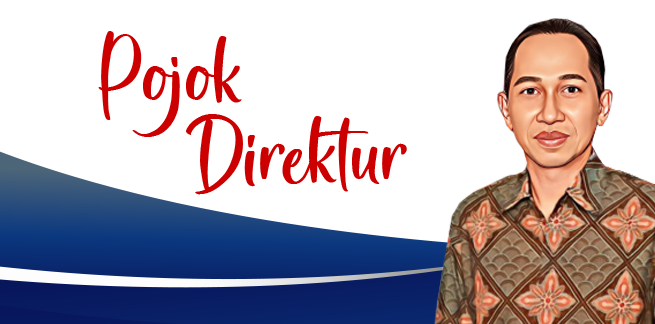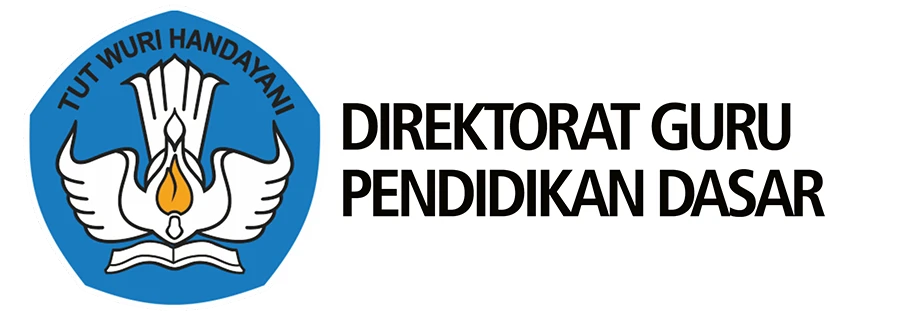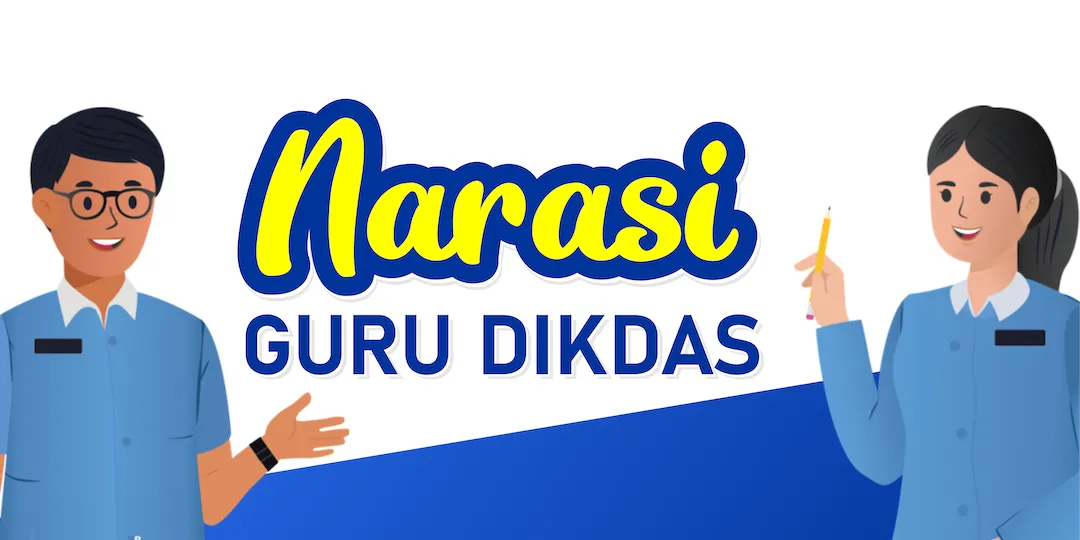Pengembangan Media Gamifikasi untuk Meningkatkan Hasil Belajar Matematika Peserta Didik Kelas V Sekolah Dasar
Abstract
The development of gamification media is currently still not widely developed by teachers, especially in elementary school learning. The purpose of this study is to describe the results of the development of gamification media products to improve the mathematics learning outcomes of elementary school students. The research and development method used is the Borg and Gall research method with 5 stages, namely needs analysis, data collection, product development, product validation, and product revision. This research resulted in a product for the development of gamification media for mathematics learning in grade 5 elementary school. The validation results of 3 validators showed that the results of the validation percentage of media experts were 94%, the results of the validation percentage of material experts were 94%, and the results of the validation percentage of linguists were 90%. From the validation results of the three validators, it was concluded that the gamification media development product was feasible to use, because it was in accordance with the criteria was very feasible. So it can be concluded that gamification media is worthy of being tested in learning to improve the mathematics learning outcomes of elementary school students.References
Aisyiah, S., Taufina, T., & Montessori, M. (2020). Peningkatan Keterampilan Berpikir Kreatif dan Kritis Siswa Menggunakan Metode Discovery Learning di Sekolah Dasar. Jurnal Basicedu, 4(4), 784–793. https://doi.org/10.31004/basicedu.v4i4.454.
Ajayi, A., Ayo, C.K., & Olamide, O. (2019). Mobile Learning and Accounting Students’ Readiness in Tertiary and Professional Institutions in Nigeria. Cogent Arts and Humanities, 6(1), 1-25. https://doi.org/10.1080/23311983.2019.1676570.
Anunpattana, P., Khalid, M. N. A., Iida, H., & Inchamnan, W. (2021). Capturing Potential Impact of Challenge-Based Gamification on Gamified Quizzing in the Classroom. Heliyon, 7(12), e08637. https://doi.org/10.1016/j.heliyon.2021.e08637.
Ayuni, N.W.D. (2022). Interactive Animation Learning Media on Android as a Creative Learning in Regression Analysis Topic. JTP - Jurnal Teknologi Pendidikan, 24(1), 9–22. https://doi.org/10.21009/jtp.v24i1.22567.
Azman, A., Jalinus, N., Ambiyar, A., & Giatman, M. (2020). Model Pembelajaran Konstruktivisme dalam Pembelajaran Matematika Teknik. Jurnal Teknik, 14(1), 142–147. https://doi.org/10.31849/teknik.v14i1.4218.
Budiyantoro, E.S. (2018). Aplikasi Game Mengenalkan Angka untuk Anak Diskalkulia Ringan Berbasis Android. http://repository.untag-sby.ac.id/844/9/JURNAL.pdf.
Cahyanto, I.D., & Prabawati, M.N. (2019). Kontruktivisme dalam Pembelajaran Matematika. Prosiding Seminar Nasional & Call For Papers, 274–280. https://jurnal.unsil.ac.id/index.php/sncp/article/view/1051.
Christopoulos, A., & Sprangers, P. (2021). Integration of Educational Technology During the Covid-19 Pandemic: An Analysis of Teacher and Student Receptions. Cogent Education, 8(1), 1964690. https://doi.org/10.1080/2331186X.2021.1964690.
Fitriyani, R.A., Putri, L.T., & Adawiyah, R. (2021). Tren Teknologi Artificial Intelligence Pengganti Model Iklan di Masa Depan. Jurnal Sosial-Politika, 2(2), 118–129. https://doi.org/10.54144/jsp.v2i2.39.
Hikmah, N., Kuswidyanarko, A., & Lubis, P. H. M. (2020). Pengembangan Media Pop-Up Book pada Materi Siklus Air di Kelas V SD Negeri 04 Puding Besar. Jurnal Ilmiah Pendidikan Guru Sekolah Dasar, 15(2), 137–148. https://doi.org/10.33369/pgsd.15.2.137-148.
İnan, C., & Erkuş, S. (2017). The Effect of Mathematical Worksheets Based on Multiple Intelligences Theory on the Academic Achievement of the Students in the 4th Grade Primary School. Universal Journal of Educational Research, 5(8), 1372–1377. https://doi.org/10.13189/ujer.2017.050810.
Jaenudin, U., & Sahroni, D. (2021). Psikologi Pendidikan. Bandung: CV. Pustaka Setia.
Latifah, Z. (2021). Meningkatkan Kemampuan Menjumlah Anak Diskalkulia dengan Media Stamp Game. Jurnal Pendidikan Kebutuhan Khusus, 5(1), 1–11. https://doi.org/10.24036/jpkk.v5i1.555.
Matsumoto, T. (2016). Motivation Strategy Using Gamification. Creative Education, 7(10), 1480–1485. https://doi.org/10.4236/ce.2016.710153.
Muehlhaus, S.L., Eghtebas, C., Seifert, N., Schubert, G., Petzold, F., & Klinker, G. (2022). Game. UP: Gamified Urban Planning Participation Enhancing Exploration, Motivation, and Interactions. International Journal of Human-Computer Interaction, 39(2), 331-347. https://doi.org/10.1080/10447318.2021.2012379.
Nurhidayat, B., Wedi, A., & Praherdhiono, H. (2020). Pengembangan Multimedia Mobile Learning Berbasis Smartphone Android Materi Huruf Madura untuk SD Negeri 1 Perante Kabupaten Situbondo. JINOTEP (Jurnal Inovasi Dan Teknologi Pembelajaran): Kajian Dan Riset Dalam Teknologi Pembelajaran, 6(2), 103–110. https://doi.org/10.17977/um031v6i22020p103.
Nurwidodo, N., Amin, M., Ibrohim, I., & Sueb, S. (2020). The Role of Eco-School Program (Adiwiyata) towards Environmental Literacy of High School Students. European Journal of Educational Research, 9(3), 1089-1103. https://eric.ed.gov/?id=EJ1262532.
Olkun, S. (2022). How do we Learn Mathematics? A Framework for a Theoretical and Practical Model. International Electronic Journal of Elementary Education, 14(3), 295–302. https://doi.org/10.26822/iejee.2022.245.
Ratnaningsih, P.W., & Triayomi, R. (2021). Analisis Model Pembelajaran Pada Kelas E-Learning. Equilibrium: Jurnal Pendidikan, 9(1), 93–100. https://doi.org/10.26618/equilibrium.v9i1.4421.
Rivera, E.S., & Garden, C.L.P. (2021). Gamification for Student Engagement: a Framework. Journal of Further and Higher Education, 45(7), 999–1012. https://doi.org/10.1080/0309877X.2021.1875201.
Rukminingsih, R., Adnan, G., & Latief, M.A. (2020). Metode Penelitian Pendidikan. Penelitian Kuantitatif, Penelitian Kualitatif, Penelitian Tindakan Kelas. Yogyakarta: Erhaka Utama.
Sailer, M., & Homner, L. (2020). The Gamification of Learning: Meta-Analysis. Educational Psychology Review, 32(1), 77–112. https://doi.org/10.1007/s10648-019-09498-w.
Shanmugam, K., & Balakrishnan, B. (2019). Motivation in Information Communication and Technology-Based Science Learning in Tamil Schools. Jurnal Pendidikan IPA Indonesia, 8(1), 141–152. https://doi.org/10.15294/jpii.v8i1.16564.
Sugiyo, Q.A., & Abadi, A.P. (2019). Konsep dan Peran Motivasi dalam Belajar Matematika. Sosiomedika, 2(1), 957–961. https://journal.unsika.ac.id/sesiomadika/article/view/2574
Syafril, S., Eldarni, E., & Rahmi, U. (2018). Teknologi Pendidikan: Peningkatan Kualitas dan Akses Pendidikan.
Thurairasu, V. (2022). Gamification-Based Learning as The Future of Language Learning: An Overview. European Journal of Humanities and Social Sciences, 2(6), 62–69. https://doi.org/10.24018/ejsocial.2022.2.6.353
Twiningsih, A. (2022). Penggunaan Media Si Pagar Air Berbasis Blended Learning untuk Meningkatkan Keterampilan Literasi Sains di Masa Pandemi. Edukatif: Jurnal Ilmu Pendidikan, 4(2), 2267-2274. https://doi.org/10.31004/edukatif.v4i2.2454.
Twiningsih, A., Gunarhadi, G., & Musadad, A. (2024). Empowering Gamification-Based Mobile Learning Media to Improve Mathematics Learning Outcomes for Dyscalculia Students. Journal of Education, Teaching and Learning, 9(1), 66-73. https://dx.doi.org/10.26737/jetl.v9i1.4899.
Viberg, O., Andersson, A., & Wiklund, M. (2021). Designing for Sustainable Mobile Learning–Re-Evaluating the Concepts “Formal” and “Informal”. Interactive Learning Environments, 29(1), 130–141. https://doi.org/10.1080/10494820.2018.1548488.
Published
Issue
Section
License
Copyright (c) 2024 Jurnal Didaktika Pendidikan Dasar

This work is licensed under a Creative Commons Attribution-ShareAlike 4.0 International License.
















